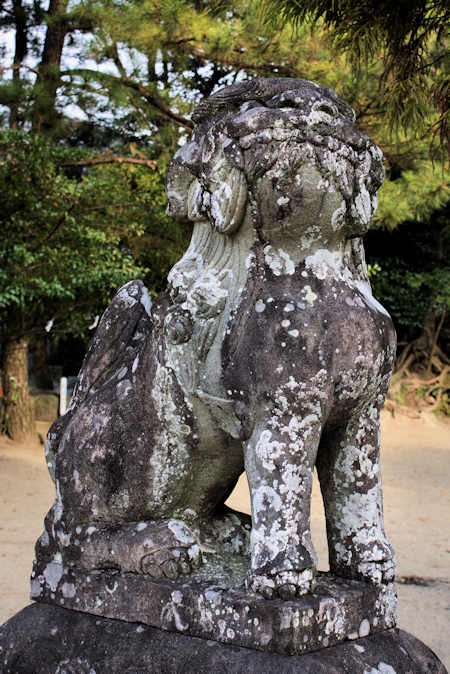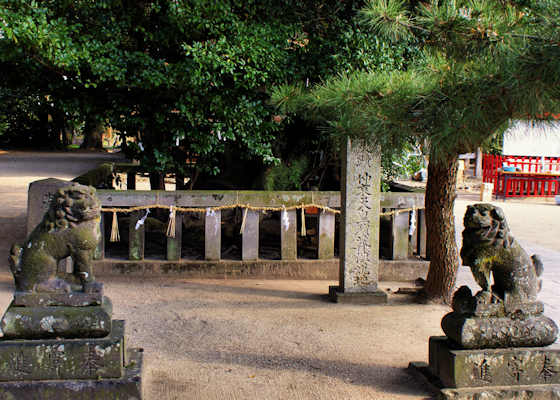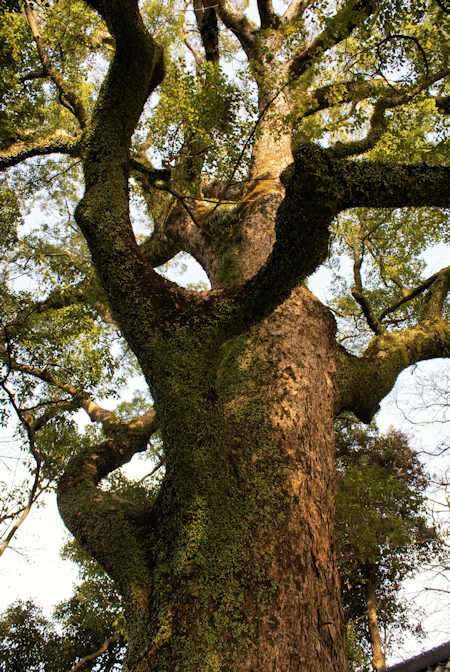Misetaireiseki Shrine & the Myth of Empress Jingu
Heading south from
Rikitake I come to the most substantial shrine of the day that is obviously much more than just a village shrine.
According to the legend, Emperor Chuai, the 14th "emperor", was unusual in several respects. He was the first emperor who was not a son of an emperor. He was also based in Kyushu rather than Yamato in central Japan. According to the Kojiki and Nihongi he reigned in the late 2nd century, but these dates have been known to be out by centuries since the Edo period but are still adhered to in much official literature.
He is said to have had a temporary palace at this spot during his military campaign to subdue the Kumaso tribe. His "wife", later known as Jingu, had a vision and suggested he not attack the Kumaso but rather invade Korea, but he scoffed at the idea.
In the ensuing battle the Kumaso were victorious and Chuai was mortally wounded by a poison arrow. Fearing that news of his death would demoralize the troops, Jingu put on Chuai's armour and led the troops to success. Further north at what is now Kashii Shrine, she announced Chuai's death and then led her troops on an invasion of Sila on the Korean peninsula.
There is absolutely zero historical evidence of such an invasion, but in the 20th century, the Jingu myth was used to justify the occupation of Korea.
According to the myth, she took with her a stone containing the spirit of Chuai, and on her return left it here and founded the shrine to protect Korea.
According to the myth, for the three years of the Korea campaign she was pregnant with Chuai's child and gave birth on her return to a son who became Emperor Ojin. This is where historians divide the Yayoi period from the ensuing Kofun period.
It looks as if the Yayoi period is characterized by immigration and cultural and technological import from southern China, SE Asia, and even the pacific islands, whereas the Kofun period is marked by massive influx of Korean culture and technology......
The third photo is of the rock around which the shrine is based. The 6th photo is inside the Awashima Shrine in the grounds. Misetaireiseki Shrine is one of only a few shrines in the Chikugo region that were listed in the Engi Shiki, which means it used to be quite important.





















0 comments:
Post a Comment